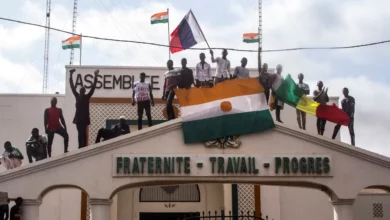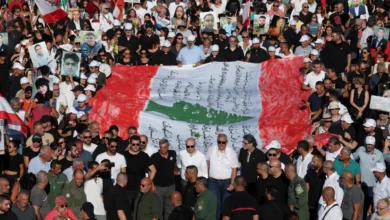Only 23 days ago, Egypt’s caretaker Prime Minister Essam Sharaf was with us in Tahrir Square, amidst large crowds of protesters who welcomed his appointment as head of the new interim government. Responding to calls from the youth that he begin his new mission from the square, Sharaf told the protesters: “It’s true that the Supreme Council of the Armed Forces (SCAF) has tasked me with forming the cabinet, but I’m here because I derive my legitimacy from Tahrir Square. When I’m unable to meet your demands, I will not be there [with the cabinet], I will be here with you in Tahrir.”
Neither Sharaf nor the youth intended to suggest that Tahrir Square represents the entirety of the Egyptian revolution. Rather, the square had became a symbol for the “street” where the revolution was born, the only tool that succeeded in bringing down ex-president Hosni Mubarak and thereby achieving the revolution’s first demand. Millions of Egyptians gathered on the street to demand the removal of Mubarak’s regime, which had deprived them of the freedom of assembly and organization.
The Mubarak regime had repeatedly argued that it guarantees these freedoms. It did, but only by using flexible rules that were subject to immediate change when certain boundaries were crossed. The old regime repeatedly justified the need to maintain the state of emergency on the grounds that Egypt is “targeted” and must be protected. At the same time, it violated citizens’ rights by practicing widespread torture and restricting the formation of student and workers’ organizations as well as political parties.
On Thursday, the SCAF approved a decree that criminalizes participation in or incitement of protests that disrupt work, a measure normally taken during states of emergency. The penalty for violation is one year in jail or a fine of L.E. 500,000. By approving this decree, the SCAF has brought back the ghost of the old regime, namely the restriction of freedom assembly and expression through vague justifications such as the “disruption of work.”
Hours after the decree was approved, military police forcibly dispersed a sit-in held by students from the Faculty of Media at the Cairo University. This was one among many violent crackdowns on protesters since the revolution began. Rights organizations and activists have documented several violations committed by the military including illegal detentions, torture, the use of force to disperse protests, and the transfer of detainees to military courts. The army has also threatened to use a harsh new anti-thug law against some protesters. The state of emergency and the need to maintain security are the most cited justifications for these violations.
Before the revolution, Egyptian citizens lived under a state of emergency for 30 years — a tactic of Mubarak’s regime to thwart political change. Since the start of the revolution, however, Egyptians have lived under a state of “counter emergency” whereby street protests will not cease until all the demands of the revolution are met and an elected and representative political system is created. Until now, the street remains the space for social forces to revolt against the remnants of the “corrupt regime” wherever they exist. But even when the new political system is formed, the right to protest, strike, and sit-in must be guaranteed since they constitute basic freedoms.
The military and the interim government, both of which proclaim their support for the demands of the revolution, are driving us to protest violations of citizens’ rights. This is ironic, however, given that this type of protest was the first spark in the Egyptian revolution. The need to ensure the resumption of work and economic activity must not come at the expense of the rights of workers and citizens — many of whom continue to work in companies and institutions under corrupt leaders.
The social forces that have participated in the revolution, including workers, professionals and students, cannot present their demands in the form of complaints to the SCAF or the interim cabinet. At the same time, they cannot let the remnants of the old regime maintain their positions through administrative ploys.
Unfortunately, the recent decree is no more than a means of terrorizing the public. The decree allows the government to criminalize all protests staged by workers, professionals, and students simply by dubbing them disruptive to work activities. Protests in Tahrir can also be targeted on similar grounds.
Despite the fact that their sit-in was forcibly dispersed yesterday, media students at Cairo University re-staged their protest the following day, with the support of their colleagues from other faculties. Youth groups and organizations also held rallies in Tahrir Square, and other squares across the country, on Friday to protest the new restrictions. This suggests that the revolution will not abandon the street or its demands.
The ongoing protests, Mr. Sharaf, are proof that not all the demands of the revolution have been met. Should you choose to fulfill your promise by re-joining us in Tahrir, that would surely be a state of emergency — you would then have to join us in facing accusations of being thugs and disrupting business.
Translated from the Arabic Edition.




